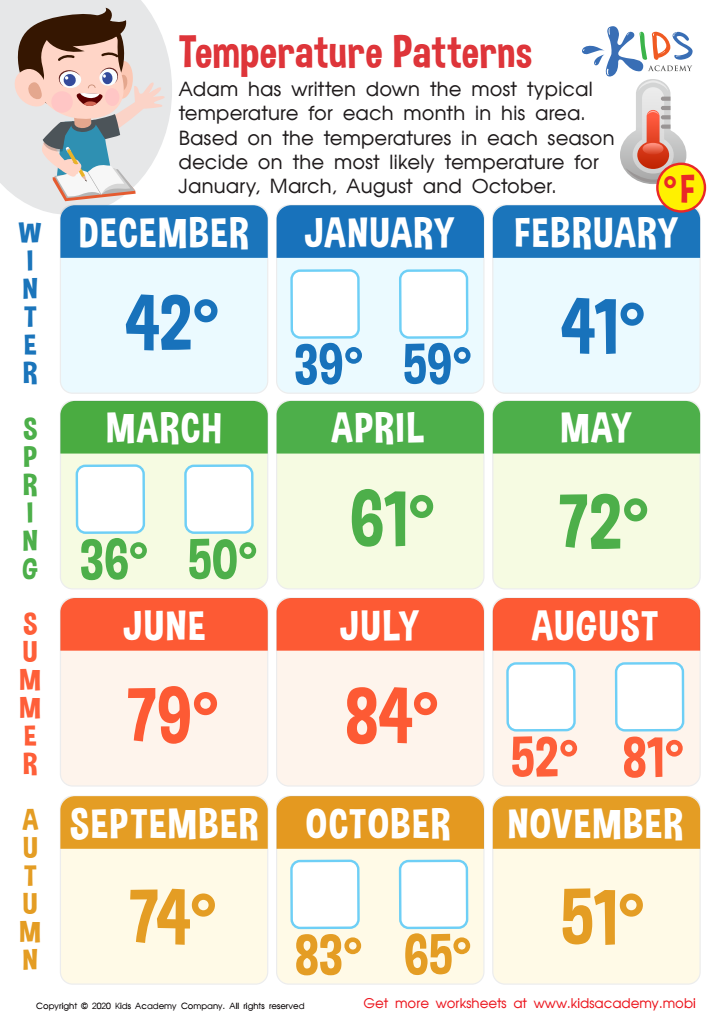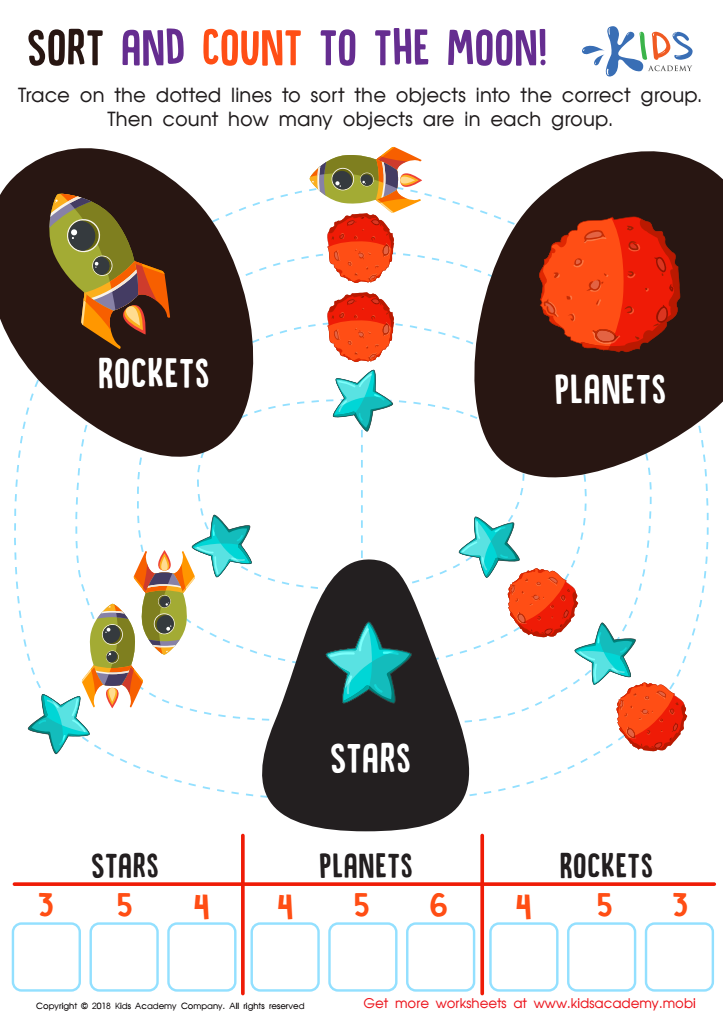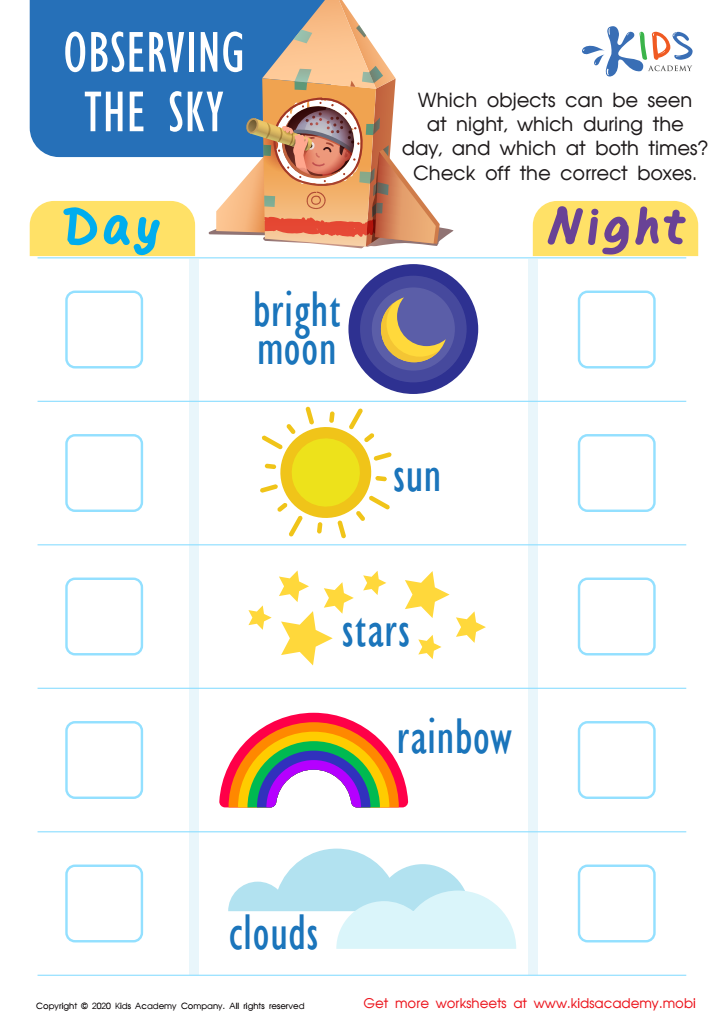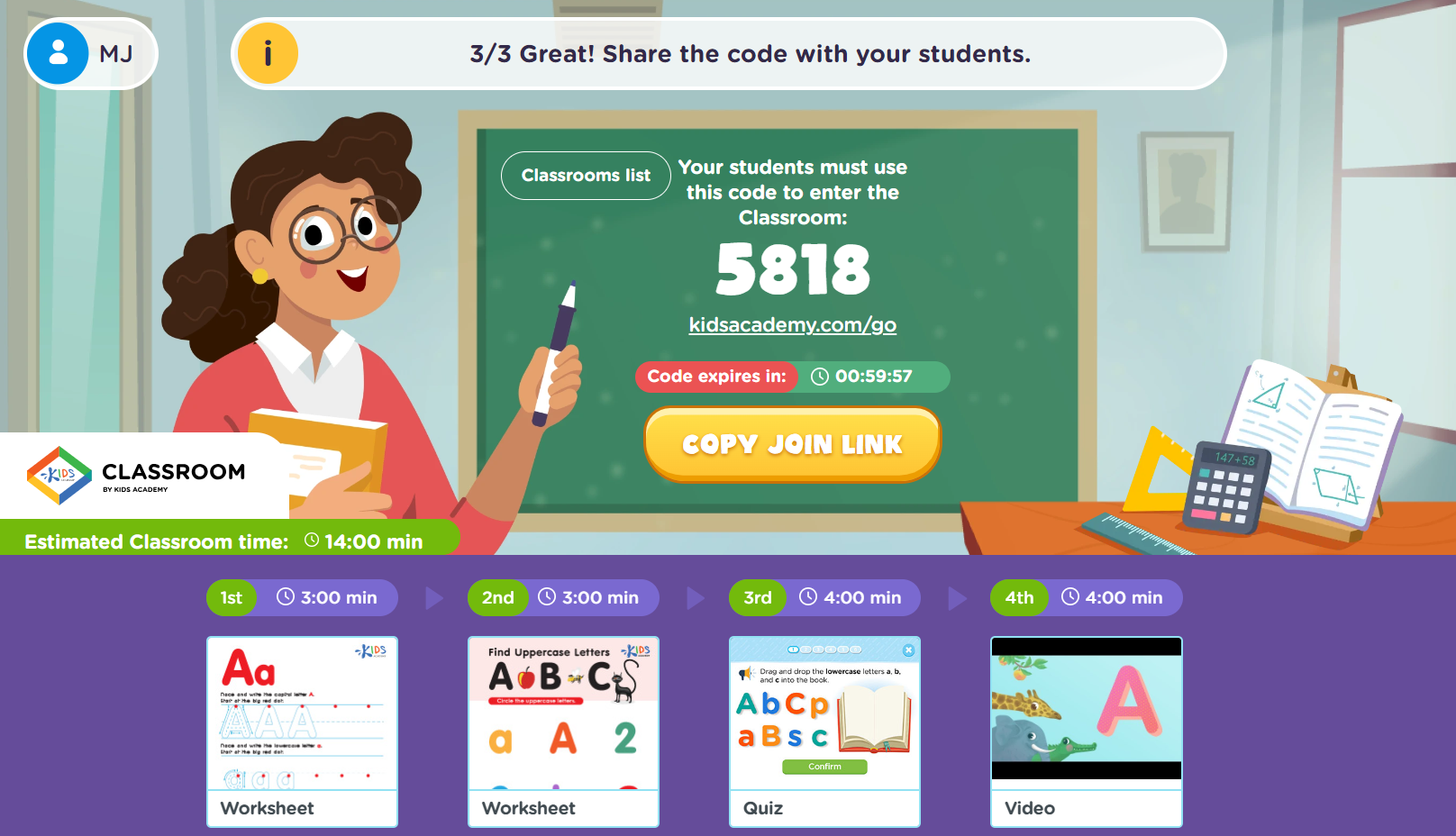Recognizing Patterns Science Worksheets for Ages 4-6
3 filtered results
-
From - To
Introduce your little explorers to the fascinating world of patterns with our "Recognizing Patterns Science Worksheets for Ages 4-6." Designed to ignite curiosity and fuel a love for science, these engaging worksheets help children identify and understand patterns in the natural world. Perfectly tailored for early learners, our materials combine fun activities like matching, sorting, and sequencing to develop critical thinking and observational skills. Watch as your child connects dots and discovers the magical connections that surround us! Ideal for both classroom and at-home learning, these worksheets are a must for building a strong foundation in STEM.


Temperature Patterns Worksheet


Sort and Count to the Moon Worksheet


Observing the Sky Worksheet
Recognizing patterns is a fundamental skill that lays the groundwork for young children's intellectual development. For parents and teachers, understanding its significance helps in fostering a supportive and enriching learning environment. At ages 4-6, children are naturally curious and constantly exploring the world around them. By engaging with patterns, they learn to make predictions, solve problems, and understand sequences—skills essential not just in science, but in everyday life.
Patterns help children in building a strong foundation in mathematics. Whether it's counting objects, identifying shapes, or understanding simple arithmetic, recognizing patterns simplifies these abstract concepts, making them tangible and understandable. Moreover, this competency spills over into language development. Identifying patterns in stories, songs, and even in conversational turns aids in comprehension and communication skills.
Additionally, teaching pattern recognition at an early age encourages critical thinking and attention to detail. It nurtures a sense of order and organization, promoting cognitive skills like memory and logical thinking. Psychologically, mastering patterns can boost a child's confidence and motivation to engage in further learning.
In a classroom or home setting, incorporating pattern recognition games and activities makes learning interactive and fun, fostering both social and emotional growth. Therefore, parents and teachers play a vital role in nurturing this skill which, in turn, sows the seeds for future academic and life success.
 Assign to My Students
Assign to My Students




















